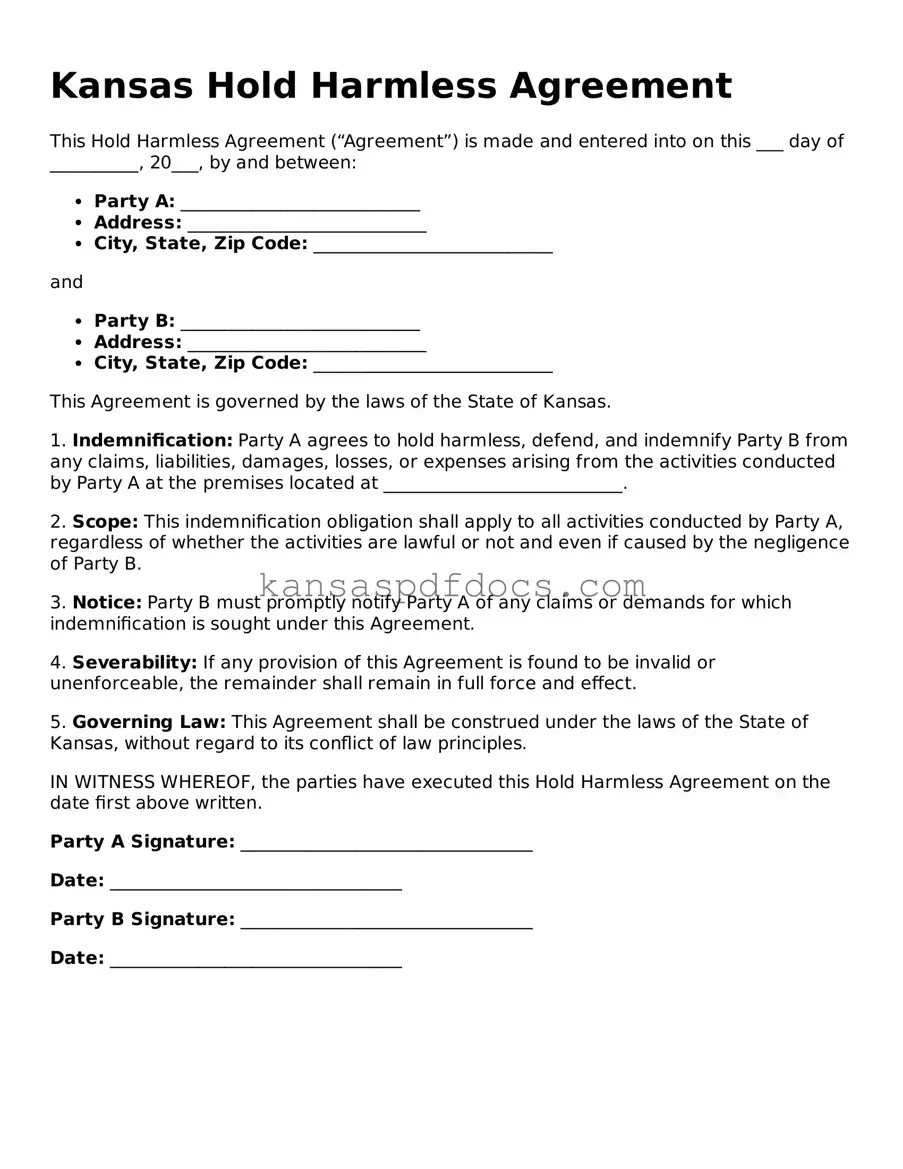The Kansas Hold Harmless Agreement form serves as a crucial legal document designed to protect individuals and organizations from liability in various situations. This agreement typically outlines the responsibilities of the parties involved, ensuring that one party agrees to assume the risk of potential damages or injuries that may occur during specific activities or events. Often utilized in contexts such as rentals, events, or construction projects, the form emphasizes the importance of clear communication and understanding between parties. It includes essential elements such as the identification of the parties, a detailed description of the activities covered, and the specific liabilities being waived. By signing this agreement, individuals acknowledge their acceptance of the risks involved, thereby providing a layer of protection for the party that might otherwise be held responsible. Understanding the nuances of this form is vital for anyone looking to navigate agreements in Kansas, as it not only safeguards interests but also fosters a sense of accountability and transparency among all parties involved.
